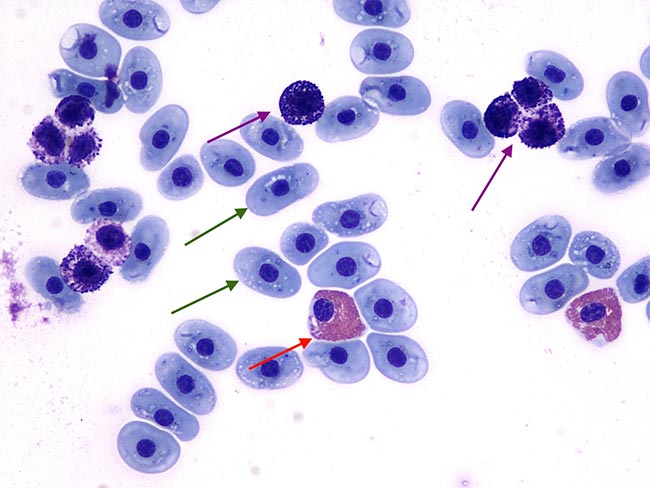2 Nov 2021
Haematology findings from a tortoise
Francesco Cian continues his Cytology Corner series by discussing the case of a tortoise that presented with lethargy and anorexia.

Image © Simon Vasut / Adobe Stock
An adult tortoise (Testudo hermanni) presented for a few weeks of lethargy and anorexia.
The veterinarian noticed signs of stomatitis and conjunctivitis on examination, and performed full haematology (Figure 1) and biochemistry analysis as part of the initial diagnostic work‑up.

What are the indicated cells?
Follow-up
Haematology revealed mild poorly regenerative anaemia and mild leukocytosis with heterophilia and basophilia. An oral swab was collected and submitted to an external laboratory for PCR testing, confirming diagnosis of herpesvirus species. That was the likely cause for the oral and oculoconjunctival lesions seen during clinical examination.
Take-home message
Extensive variability exists in terms of blood cell morphology and reference intervals among animals of different species. Therefore, knowledge of the “normal” haematology findings in all these species is essential before interpreting blood results from subjects with pathological conditions.
Whereas in mammals ethylenediaminetetraacetic acid (EDTA) is the anticoagulant of choice for haematology analysis, it has been found to cause haemolysis in reptile blood samples, especially in chelonians.
Therefore, lithium heparin (LiHe) is widely used for haematology in many reptilians. LiHe blood sample can also be used for biochemistry testing.
